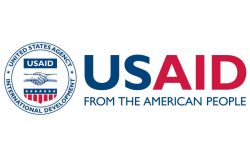In one of the most egregious examples of asymmetrical warfare in modern times, the United States of America, the world’s most powerful state, invaded Grenada, one of the world’s weakest mini-states, almost exactly twenty-five years ago on Tuesday 25 October 1983.
The US objective might have been to terminate that country’s four-year flirtation with socialism and sovietism. The real results, however, were to discredit the regional security system in which major CARICOM states thereafter refused to participate and to damage the consensual principle which guided decision-making in the then fledgling Caribbean Community.
A small island state of 344 km² − about three quarters of the size of Dadanawa Ranch in the Rupununi − with a population equal to that of the Essequibo Islands-West Demerara Region, Grenada subsisted precariously on the export of its banana, nutmeg and cocoa crop. In this unlikely theatre, regime change was effected by a US military task force comprising an aircraft carrier, two amphibious assault ships, fifteen other naval vessels, several transport and special task aircraft, two Ranger battalions, two brigades of the 82nd Airborne Division, a reinforced Marine Battalion and other support units. Over 7,000 troops − about the population of St George’s, the capital − were involved.
The pretext for external intervention arose out of an internal event. An extremist faction of hard-core Marxist-Leninist within the New Jewel Movement’s Provisional Revolutionary Government seized power on 19 October 1983, executed the prime minister and other cabinet members, dissolved the administration and established a junta called the Revolutionary Military Council. These tragic events could have set the stage for a superb effort by CARICOM to consolidate the bases of small state sovereignty; the supremacy of international law; regional security cooperation and community solidarity. It didn’t.
Within 48 hours of the St George’s meltdown, Prime Minister George Chambers of Trinidad and Tobago − then current CARICOM chairman − convened an emergency meeting of Heads of Govern-ment in Port of Spain on Saturday 22nd to discuss the crisis. A night-long session into early Sunday 23rd October produced consensus on certain fundamentals: a pacific solution should be wholly regional in nature and should exclude extra-regional military intervention; it should accord with international law and the UN Charter; and should aim primarily at restoring normalcy. It was agreed also that a CARICOM fact-finding mission acceptable to the Grenadian authorities should be appointed to go to the island.
With daylight, consensus evaporated. By mid-morning on Sunday 23rd, representatives of Barbados, Jamaica and the Organisation of Eastern Caribbean States − the numerical majority at the meeting − renounced the consensus reached only a few hours earlier. In the final analysis, four states − The Bahamas, Belize, Guyana and Trinidad − opposed military intervention. CARICOM stood divided on the most important issue of the security of a small state. The reason for the rejection of the pacific solution soon became evident.
Even as CARICOM Heads were talking on Sunday 23rd, the USA was assembling its invasion force and cobbling together a 300-member ‘Caribbean battalion’ of policemen and soldiers from Barbados, Jamaica and the OECS for the invasion codenamed Operation Urgent Fury. In the aftermath of the action when justification had to be found and the challenge of international law had to be faced, it was learnt that the Authority of the OECS had met in Bridgetown, Barbados, on Friday 21st October and decided to establish a “peacekeeping force” and to request “assistance from friendly countries to provide transport, logistics support and additional military personnel to assist the efforts of the OECS” to deal with the Grenada crisis.
The US rationalisation for the invasion collided with states’ obligations under the UN Charter for the pacific settlement of disputes, threats to peace and regional arrangements for peacekeeping. On the day of the invasion, therefore, Guyana introduced a resolution in the UN Security Council condemning the invasion and calling for the immediate withdrawal of foreign forces. Eleven members supported, three abstained and only the USA vetoed the resolution. For a similar resolution in the UN General Assembly, 108 voted in favour, 27 abstained and nine voted against.
Notwithstanding US explanations for the invasion – an invitation for intervention by the Organisation of Eastern Caribbean States; the protection of American lives and an alleged Cuban military buildup in Grenada – the implications for regional peacekeeping were far-reaching.
For small Caribbean states, this was a worst case scenario – neighbouring states arrogating the prerogative to invite an extra-regional power to intervene in an internal security crisis. What could be a greater threat to statehood?
When questions are raised about the deep distrust for the establishment of a permanent regional security system among the small states of the Caribbean that endures to this day, answers must be sought in the web of dissimulation that was woven to facilitate the conquest of Grenada twenty-five years ago.









